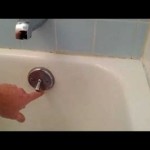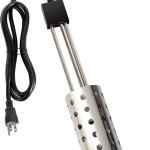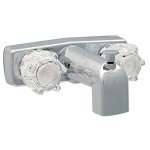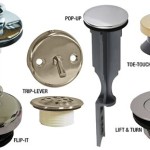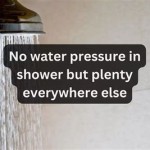Plumbing For Bathtub: Essential Aspects to Consider
Plumbing for bathtubs is a crucial aspect of bathroom design and functionality. By understanding the essential aspects of bathtub plumbing, you can ensure a seamless bathing experience and avoid costly repairs in the future.
1. Water Supply Lines
Bathtubs require both hot and cold water supply lines. These lines should be made of copper or PEX (cross-linked polyethylene) and sized appropriately for the flow rate required by the bathtub faucet. Improperly sized supply lines can result in insufficient water pressure or temperature fluctuations.
2. Drain Assembly
The drain assembly is responsible for draining water from the bathtub. It consists of a drainpipe, a drain strainer, and a P-trap. The drainpipe should be sloping away from the bathtub to ensure proper drainage. The drain strainer prevents hair and debris from clogging the drain, while the P-trap creates a water seal that prevents sewer gases from entering the bathroom.
3. Faucet
The faucet controls the flow of water to the bathtub. There are various types of bathtub faucets available, including single-handle, double-handle, and hands-free faucets. When selecting a faucet, consider its style, functionality, and flow rate. Higher flow rates can provide a more luxurious bathing experience, but they may also increase water consumption.
4. Overflow Drain
An overflow drain is a small hole located near the top of the bathtub. Its purpose is to prevent water from overflowing the bathtub if the faucet is accidentally left on. The overflow drain is connected to a drainpipe that leads outside the bathroom or to a secondary drain.
5. Shutoff Valves
Shutoff valves are installed in the supply lines to isolate the bathtub from the water supply. These valves allow you to turn off the water to the bathtub for maintenance or repairs without affecting other fixtures in the bathroom. Additionally, shutoff valves can be helpful in case of leaks.
6. Access Panel
An access panel is often installed behind the bathtub to provide access to the plumbing connections. This panel allows plumbers to perform maintenance or repairs without removing the bathtub. Access panels should be sealed properly to prevent water damage.
7. Proper Ventilation
Proper ventilation in the bathroom is essential to prevent moisture buildup, which can lead to mold and mildew growth. Install an exhaust fan in the bathroom and open windows when possible to circulate air and remove excess moisture.
Conclusion
Understanding the essential aspects of plumbing for bathtub will help you make informed decisions during the planning and installation process. By considering these factors, you can ensure a well-functioning and enjoyable bathing experience for years to come.

Bathtub Plumbing Installation Drain Diagrams Shower

Bathtub Parts Everyone Should Know About Part Names 2024

7 Bathtub Plumbing Installation Drain Diagrams

Replacing A Bathtub Fine Homebuilding

Home Fix Gurgling Sound Erupts From Bathtub Drain

How To Replace A Bathtub Drain

How To Install A Bathtub With Pictures Wikihow

Plumbing In The Walls

Bathtub Drain Kit Installation Step By

Replacing A Bathtub Fine Homebuilding


